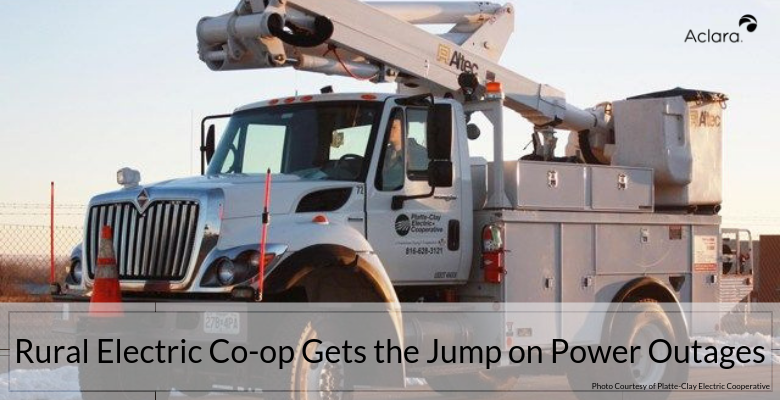The dispersed population of most cooperatives presents unique challenges in servicing members. One of the most pressing is detecting and responding to outages in an efficient and timely manner.
Recently Rural Electric Magazine, the publication of the National Rural Electric Association (NRECA), the trade group that represents the interests of over 900 rural co-ops, published an article examining how rural Missouri-based Platte-Clay Electric Cooperative (Platte-Clay) is detecting power outages and their extent with data derived from its advanced metering infrastructure (AMI) system.
The First Step
Platte-Clay operates its AMI network over its power lines, using Aclara’s TWACS® (two-way asynchronous communications system) technology. In addition to reading meters, however, Platte-Clay has used the data it gets from the TWACS system to identify how far a power outage extends by pinging meters in the vicinity of reported problems.
This is one of the important benefits of the TWACS power line communication system identified by Platte-Clay to its customers on its website:
“One of the important member benefits is the ability to use TWACS to detect and verify outages. In addition, the system is interconnected via the interactive voice response (IVR) unit–the automated telephone system–to the co-op’s online outage map which tells dispatchers where crews are needed. In short, it gives members the same outage information as the co-op dispatchers. Members can check on co-op outages and know that an outage in their area has been reported and follow along as service is restored.”
The Next Step
However, pinging meters to discover the extent of an outage is a reactive approach that starts with the utility being notified there is a problem – usually by a “no power” call from a customer.
Platte-Clay recently began using a more proactive approach that complements outage management systems by automating and preemptively delivering outage alert and restoration confirmation messages.
The Aclara Fault Detection and Localization (FD&L) module of AclaraONE™, Aclara’s unified software platform for electric, water, and gas utilities, utilizes patent-pending algorithms to detect when a fault occurs, eliminating reliance on member calls to the utility. These algorithms also enable the identification of a fault location within the network by helping to:
- Reduce delays in service restoration by targeting truck rolls to the likely location of the cause of the service disruption
- Decrease time lost “driving the line” looking for the outage.
Since implementing the FD&L module of AclaraONE, Platte-Clay has realized numerous and significant benefits, both for their residential and commercial members, including improved member satisfaction, enhanced reliability, reduced costs, and improved safety.
Learn more about how Platte-Clay uses FD&L analytics of AMI data to determine the location and extent of outages.



